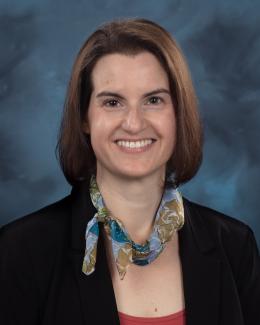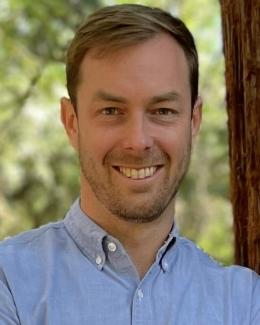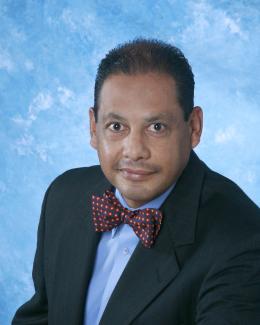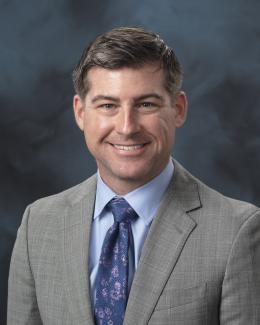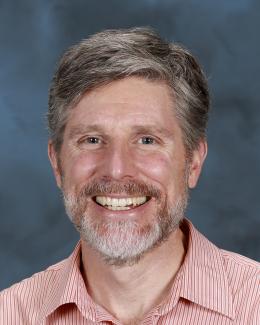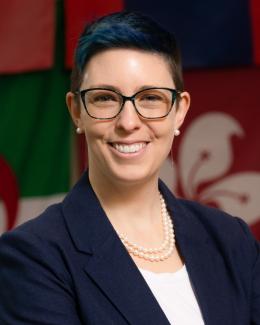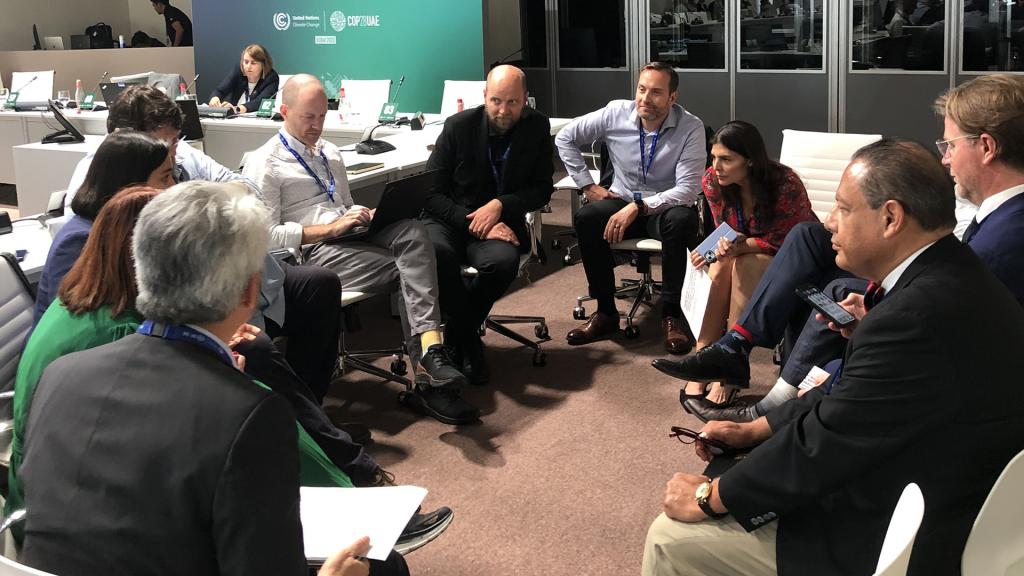
The Department of Energy’s Oak Ridge National Laboratory was represented by four scientists at last year’s United Nations Framework Convention on Climate Change Conference of the Parties, known as COP28. This is the first time ORNL participated as an official Observer Organization.
For two weeks in November and December 2023, COP28 brought government representatives from almost every country to Dubai to negotiate climate policy. The talks resulted in a historic compromise agreement that calls on countries to transition away from fossil fuels in energy systems to drive greenhouse gas emissions toward net zero by 2050.
David McCollum, a senior scientist and lead for ORNL’s contributions to the Net Zero World Initiative, and Edgar Lara-Curzio, director of the lab’s Fossil Energy and Energy Transitions and Infrastructure programs, attended the first week of conference activities. During the second week, the two handed off their seats to Carter Christopher, ORNL’s Human Dynamics section and Climate Security lead, and Peter Thornton, head of ORNL’s Earth Systems Science section and director of the lab’s Climate Change Science Institute.
ORNL scientist Gale Hauck, while on a detail to DOE as a senior advisor to the Office of Nuclear Energy, attended the conference as an Official Observer on behalf of the American Nuclear Society.
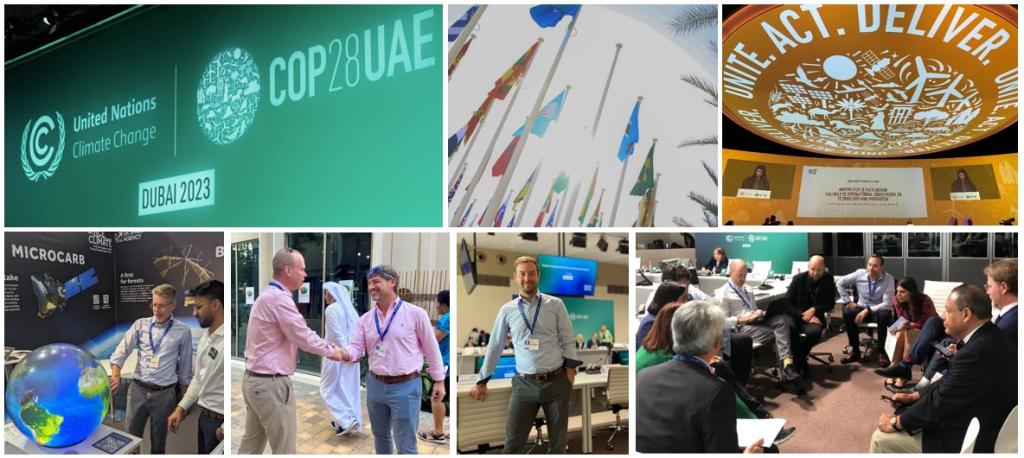
ORNL representatives shared the following takeaways from their COP28 experiences.
Q: What led to your participation in the conference?
McCollum: My research is about developing computer models that look into the future for how society – technologies, policies, economic systems and institutions – might evolve over the coming decades, to address climate change and other sustainability challenges. This kind of work on energy transition pathways analysis is highly interdisciplinary. So, for someone like me, COP is highly relevant and incredibly educational. The conference brings people together from all corners of the energy, climate and environment space, providing a unique opportunity to keep on the pulse of the latest knowledge and happenings across a range of communities.
Thornton: My research is in the development and application of global-scale climate models, which contribute to the science foundations used by negotiators at COP. My leadership in the Climate Change Science Institute was also relevant. A major component of that was a November workshop we held with Georgia Tech on decarbonization in the Southeast. It was a multi-sector gathering that looked at a combination of technology, data and research underpinning the transition to a decarbonized economy. I have also contributed in the past to Intergovernmental Panel on Climate Change climate assessments.
Christopher: One of the initiatives I’ve been leading for our directorate is the establishment of a climate security program. The way we define climate security is the intersection of climate change with national security interests, particularly how climate change may ultimately cause the kind of humanitarian disasters and critical infrastructure impacts that could lead the U.S. national security community to get involved. In September we held the first in a series of climate security workshops, focusing on water security issues resulting from climate change, such as stresses on freshwater availability, drought, sea level rise and human migration from water insecurity.
Lara-Curzio: I direct the Fossil Energy and Carbon Management program at ORNL, and the ways we use fossil fuels to generate, transmit, utilize and store energy have direct climate impacts. Activities under this program have a strong connection to the goals of this event in terms of how to minimize and manage emissions and how we decarbonize all sectors of the economy. I’m also directing the Energy Transition and Infrastructure programs at the lab, and in that capacity, I interface with the DOE Office of the Under Secretary for Infrastructure, which is focused on large-scale demonstration projects to accelerate the deployment of clean energy technologies and the energy transition.
Q: I understand you were attending as an observer. Please explain what that means.
McCollum: Observer Organizations must be not-for-profit institutions. Observers are allowed in pretty much all the meetings and negotiations. It’s a very open, transparent and democratic process – in the spirit of the United Nations. But being an observer at COP is not just passive, because so much is happening outside the formal negotiations. There are many side events taking place in pavilions all over.
Thornton: As an observer, we could see the process of the text to the international agreement being hammered out paragraph by paragraph in plenary discussions led by the COP president, Sultan al-Jaber from the United Arab Emirates. That was very interesting, and while we could not make comments during those sessions, we could track the progress through multiple drafts and discuss the implications of the emerging consensus language with other participants during side events.
Q: If you attended the Conference of the Parties before, how was your conference experience different this year in terms of what you observed about the negotiations and participation?
McCollum: (a third-year attendee) On the negotiations side, we are seeing a real shift in the conversation, away from countries setting targets on greenhouse gas emissions toward addressing the root cause of those emissions in the first place, the burning of fossil fuels. On the participation side, I saw upscaled engagement this year from private industry, from youth and from women and girls.
For example, one of the first days at COP was devoted to the theme of gender equality. I attended a really great plenary event chaired by former Secretary of State Hillary Clinton, who led an all-female panel of leaders from big tech companies in the U.S. and early career change-makers from developing countries. They talked about the need for greater recognition for, and active participation from, women and girls in the clean energy transition and in adapting to climate change. It was the first time something like that had been done at COP, and I could sense it was quite inspiring to a lot of people there. Even for folks who live and breathe this stuff every day, it’s really powerful when certain topics get featured on the international stage by such influential leaders from around the world. The conversation can’t be ignored at that point.
Q: If this was your first COP, what were your impressions?
Christopher: It was so vast. You have almost every country in the world, and they all are presenting their ideas and activities for meeting their net-zero goals, addressing risks around climate change and supporting the energy transition. It was an unparalleled opportunity to learn from such a diverse set of perspectives while also observing some of the high-level discussions and negotiations setting the course for climate action over the next decade.
One big takeaway for me was: It is clear that, despite the politics and negotiations around moving away from fossil fuels, the world is largely unified in our collective goals to decarbonize and our views of climate change as a real, existential threat. It was really exciting to see how much everyone is wanting to invest and move in the right directions.
Lara-Curzio: I saw a lot of young people and students there. It’s good that it’s not just old timers talking to each other. I had a chance to talk with folks from Vanderbilt University, which has a program to bring students to these events. Addressing climate change is going to be a multi-generational process, and they have to be part of that.
Q: Were there specific presentations, debates or round tables that you found especially helpful or insightful? What were they, and how did you contribute?
Lara-Curzio: It was great listening to representatives from the global South, who have a very different perspective on balancing their own economic development while addressing legacy emissions from the developed world. For example, I was inspired by a session on electrifying cooking in Africa and Asia.
While I was operating in “listening mode” for most events, I was able to participate in a breakout session of an event focused on how to promote hydrogen to synthesize sustainable fuels for maritime transportation. My recommendation was for national navies to sign long-term purchasing agreements with ports to buy sustainable fuels that include hydrogen. The idea is to plant a seed to grow the hydrogen economy by securing long-term demand, not unlike how large government and commercial fleets have been used for promoting the adoption of new technologies.
Christopher: I attended a session about the effort to stop deforestation to meet a commitment made during COP26 in Glasgow, Scotland. It culminated in John Kerry (then U.S. presidential envoy for climate and former secretary of state) giving a talk about what has been accomplished. The passion with which he spoke was incredibly motivating and highlighted for me the importance of deforestation monitoring as a research component for climate security, and we will apply ORNL’s geospatial science expertise to help address this problem.
Kerry focused on the need for countries to not just make pledges around sustaining forests, but to do more enforcement against illegal deforestation. He talked about how it’s a whole-government effort on the U.S. side that would integrate multiple agencies, including the scientific community, to identify, track and monitor not only the activity of deforestation but also what happens to the logs when they are removed from the forest. That’s exactly the space we work in. We have the tools in geospatial science to understand where change is happening and the ability to track that change over time, as well as understand the movement of something like lumber from one area of the world to another. I see a lot of opportunities for us to help the U.S. government and international partners with monitoring and enforcement to prevent deforestation.
Thornton: A panel that was very interesting was on blue carbon in estuaries, near-shore ocean environments and open-ocean environments. It was looking at the management of those systems to retain and increase the storage of carbon. ORNL pursues relevant research on salt marsh and mangrove ecosystems water in the coastal zone. It’s interesting to see there’s international effort around understanding how these ecosystems work to maximize their ability to retain carbon.
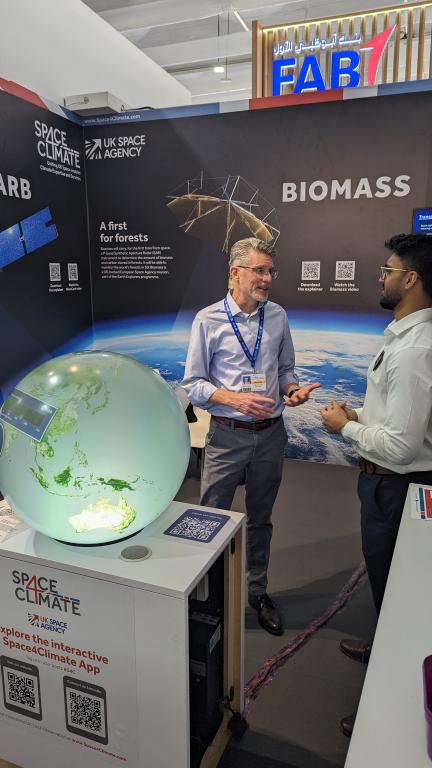
Q: What benefits do you feel your participation brought to you as a researcher or to ORNL?
Thornton: It’s a unique opportunity to be able to meet with real users of the climate change knowledge we develop. I’m sure we’ll be able to grow our international presence and our international reputation as a lab through those kinds of contacts. Each year, whomever goes on behalf of ORNL will be able to build on the connections we start now.
Q: What were some of the most significant interactions you had at the conference, and why were they meaningful or helpful to you?
Thornton: I was focusing my time and energy on better understanding carbon-trading market mechanisms, seeking out people who could help me understand how they operate on the ground, what’s coming next, how the voluntary part is working and how a more unified approach across UN nations would be received. I had a chance to talk to a financial trader in these carbon markets. They had a very unique perspective as a financial professional. They weren’t an expert on the science, yet they needed to be able to understand the details of the science in order to make smart decisions about which credits are worth the price being asked. It was an interesting perspective to view this like any other commodity market, with a wide range of pricing depending on the perceived quality and permanence of the credits. Carbon pricing is widely perceived as an important mechanism to achieve rapid decarbonization across all aspects of the global economy.
Christopher: There was a lot of discussion of impacts of climate change on vulnerable populations. In most cases, I saw those conversations being presented through the lens and voice of those populations. There were indigenous communities represented, particularly from small island nations already being impacted by sea level rise. One of the most powerful pieces they conveyed is that vulnerability to climate change is not just a circumstance of geography. These communities recognize that it’s a complex picture with a complex history that includes colonialism, exploitation and natural resources being used to benefit other parts of the world – which now leaves these vulnerable nations at even greater risk. So, they are conveying all the dimensions of that, and it’s very heartfelt and emotional and very passionate. One of the things ORNL’s Human Dynamics section does is help to characterize those vulnerable populations in the form of data. What I heard at COP really reinforces why it’s so important that we step up and offer our tools, capabilities, knowledge and insight to help those communities weather this storm.
Q: I understand this event provides some unusual access to many decisionmakers and thought leaders. Did you have opportunities to hear or speak with people you might not have met before? Who and what did you learn? What emerged from those conversations?
Lara-Curzio: It was a good experience having access to leaders without a lot of barriers. Many events consisted of discussion panels in relatively small venues, so it was easy to walk to the front of the room at the end of the event to engage participants. For example, I had a chance to shake hands with former DOE secretary Ernest Moniz after he chaired a panel discussion on fusion energy organized by the Atlantic Council and had a very brief exchange on recommendations of the Energy Futures Initiative foundation for an expanded role of the national laboratories to support DOE’s significant investments in clean energy.
I had an opportunity to chat with Susan Aitken, the council leader of Glasgow, which hosted COP26, about using digital twins for city planning purposes. Members of that panel were aware of ORNL’s work mapping every building in the country using GIS data, then using AI to help construct digital twins. It was a great conversation, and I have already reached out to folks in ORNL’s Geospatial Science and Human Security division to make sure those connections stay in place.
I also had great conversations with people from financial institutions like BlackRock and J.P. Morgan. Although we traditionally don’t interact with financial organizations, we are going to be following up about how we could work with them to inform decisions for financing large projects as part of the energy transition.
McCollum: Another reason why COP has a really special feel is because everyone is in the mood to talk, including making new connections. I had a number of DOE and national laboratory interactions, of course, including some good chats with three lab directors who were there as well as the Deputy Secretary of Energy David Turk. He was asking some good questions about the energy modeling work we are doing at ORNL and across the lab complex. I also had dinner with some IPCC colleagues, including current IPCC Chair Jim Skea as well as Kate Calvin, chief scientist at NASA and co-chair of the IPCC working group on mitigation. We were chatting about the future of the IPCC and, more broadly, how science and scientists can continue to remain relevant for decision-making processes globally and within individual countries.
Thornton: After a panel discussion of U.S. senators explaining their positions on climate action, I did have a chance to speak with several of them to share that ORNL has a broad interest in these topics. It was interesting to hear their comments about increased deployment of nuclear and renewable energy, primarily from solar and wind, as a strategy for climate change mitigation. And of course, ORNL has huge investments in these research areas, such as battery storage technology for renewables.
Very importantly, when it comes to transitioning away from fossil fuels, there was bipartisan recognition that it’s a difficult thing to do. In the world economy, you can’t just flip a switch. While people agree switching from fossil fuels is important, exactly how you do it in each region and for each sector of the economy is not obvious. I feel like there is an important role for us on the science and technology side, to be informing those decisions and policies so decisionmakers have the facts they need.
Q: What are some of the most important takeaways from the conference that you find relevant to ORNL’s work on decarbonization, adaptation or resilience?
McCollum: A key takeaway is a clear recognition that getting to net zero is going to be really challenging. Not impossible, but hard. The world needs to invest in a variety of advanced solutions to make it happen, in particular squeezing out those last remaining emissions by mid-century. At ORNL, we are working on so many pieces of the decarbonization puzzle, ranging from low-carbon cement to nuclear power, hydrogen, technology adoption, consumer behavior and everything in between. Bringing our science closer to decision-making is something we intend to emphasize at the lab in the years ahead. COP makes it really clear why doing that is important.
Lara-Curzio: Since COP21 in Paris, countries regularly report their carbon emissions. Several sessions and panels at COP28 discussed the need for bringing transparency to this system, including to carbon trading markets. One area where we (ORNL) seek to play a role is in developing tools for monitoring, reporting and verification of CO2 management. Here in the U.S., the Inflation Reduction Act is now providing tax credits for carbon dioxide captured and geologically stored. But how does the IRS verify that tax credit applicants actually injected what they said they would and that it’s staying underground without leaking?
Last September, we organized a workshop at ORNL on CO2 measurement, reporting and verification. We invited folks from energy companies that will be active in carbon capture, conversion and sequestration. We continued those conversations with them in Dubai, including plans for demonstrating how digital ledgers, protected with blockchain technology, could bring transparency to the whole process.
Christopher: I think there’s an opportunity for ORNL to have a much more active role at the next COP in Azerbaijan. I would like to see the folks that attended put our heads together with other people at the lab to figure out how we can support and contribute in a very active way with presentations, hosting or driving conversations there.
UT-Battelle manages ORNL for DOE’s Office of Science. The single largest supporter of basic research in the physical sciences in the United States, the Office of Science is working to address some of the most pressing challenges of our time. For more information, please visit energy.gov/science. — Heather Duncan
